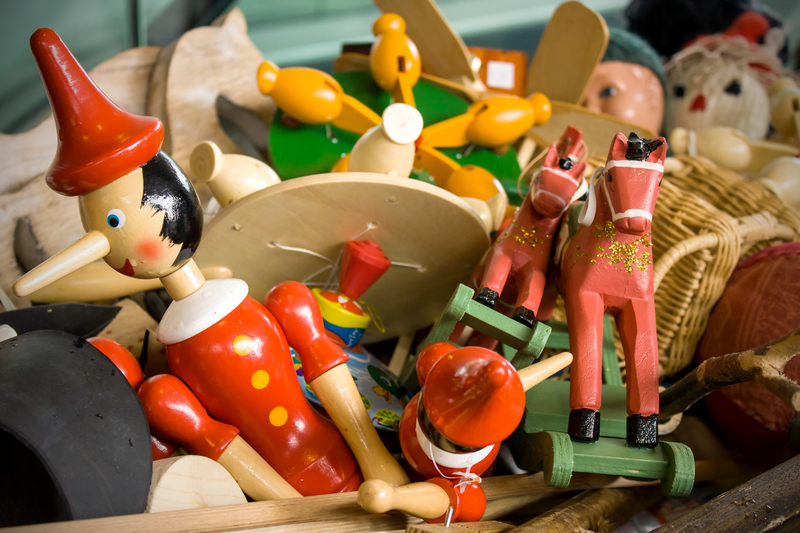Reducing Plastic Footprint: What to Avoid
The problem of plastic pollution is one of the most pressing environmental challenges of our time. With plastic traces found in places as remote as Antarctica and as familiar as our kitchen pantries, understanding how to reduce your plastic footprint is essential for sustaining the planet. This comprehensive guide dives deep into what you should avoid in order to actively reduce your plastic waste, offering actionable tips for consumers, businesses, and communities. Whether you're looking to curb single-use plastics, rethink your daily shopping habits, or advocate for systemic change, here's what you need to know to make a difference.
Understanding the Plastic Footprint and Its Impact
Before you can start reducing your plastic footprint, it's critical to understand what it means. Your plastic footprint refers to the total amount of plastic you consume and discard, whether it ends up recycled, landfilled, or as litter in the environment. The alarming growth of global plastic production--over 380 million tons annually--makes individual action vital in reducing plastic pollution.
Why Is Reducing the Plastic Footprint Important?
- Environmental Protection: Plastics degrade slowly, persisting in the environment for centuries and releasing harmful microplastics.
- Wildlife Safety: Animals often mistake plastic waste for food, resulting in injury or death.
- Human Health: Microplastics are now found in water, food, and even the air we breathe, posing potential health risks.
- Climate Change: Plastic production relies heavily on fossil fuels, increasing greenhouse gas emissions.
With such dire consequences, reducing your plastic footprint isn't just about personal preference; it's an essential contribution to a healthier planet.

What to Avoid to Cut Down on Plastic Use
To be truly effective in reducing your plastic pollution footprint, you need to know what materials, products, and habits to steer clear of. Here are the main culprits you should avoid:
1. Single-Use Plastics: The Top Priority
When striving to reduce plastic waste, single-use plastics should be the first to go. These convenient items are used for mere minutes but persist in our ecosystems for generations. Common single-use plastic pollutants include:
- Plastic bags (shopping bags, produce bags)
- Bottled water and soft drink bottles
- Straws and stirrers
- Cutlery, plates, and cups
- Food wrappers and sachets
- Plastic takeout containers
- Balloon sticks and party decorations
Tip: Instead of choosing convenience, bring your own reusable shopping bags, bottles, and containers. Many retailers now support zero-waste efforts and reward customers who use sustainable options.
2. Microplastics and Microbeads
Microplastics are tiny plastic fragments less than 5mm in length. While some result from the breakdown of larger plastic items, others--known as microbeads--are intentionally added to products for exfoliating or scrubbing purposes. Common sources to avoid:
- Facial scrubs and exfoliators containing microbeads
- Shampoos and toothpaste with plastic particles
- Cleaning supplies that boast "scrubbing power" from microplastics
- Synthetic clothing made from polyester or acrylic (which shed microfibers in the wash)
Tip: Choose body care and cleaning products labeled "microplastic-free," and opt for natural fibers in clothing to minimize microfiber pollution.
3. Excessive Packaging and Over-Packaged Products
Modern shopping habits expose us to a surprising amount of unnecessary plastic packaging. Excessive packaging doesn't just pile up in your bin--it strains recycling systems and contributes to landfill waste. Watch out for:
- Fruit and vegetables wrapped in plastic film or trays
- Multipacks with extra plastic wrapping
- Tiny individually packaged snacks or serving-sized condiments
- Online orders excessively boxed or wrapped in bubble wrap
Avoid over-packaged goods by:
- Shopping at local markets where produce is loose
- Bringing your own containers for bulk goods
- Choosing brands committed to minimal and recyclable packaging
4. Disposable Plastics in Personal Care and Cleaning Products
Many household products are designed for convenience but quickly turn to waste. Pay attention to these everyday disposable items:
- Disposable razors
- Wet wipes (often contain hidden plastics)
- Cotton buds with plastic stems
- Sanitary products with plastic lining
- Plastic-wrapped "single-use" cleaning wipes
Tip: Reduce your plastic footprint by swapping disposables for reusable or compostable alternatives such as safety razors, cloth wipes, or menstrual cups.
5. Balloons and Plastic Decorations
Celebrations often come at the expense of the environment. Balloons, confetti, streamers, and other party decorations are typically made from plastics that easily escape into waterways and landscapes, harming wildlife.
Avoid these items entirely, or opt for:
- Potted flowers
- Paper or fabric bunting
- Reusable decorations
Hidden Plastics: Surprisingly Common Sources to Avoid
While single-use bags and straws are the most visible offenders, many forms of plastic waste are hidden in plain sight. Understanding these helps you further reduce your plastic consumption.
1. To-Go Coffee Cups and Lids
Most takeout coffee cups may look like paper, but they often have a plastic lining that makes them non-recyclable. The lids themselves are typically #6 or #7 plastics, which are also not easily recycled.
Tip: Carry your own travel mug or thermos to any cafe or coffee house. Many shops offer discounts for bringing a reusable cup.
2. Plastic Teabags
Many commercial teabags are sealed with plastic, and some premium "silky" teabags are 100% plastic mesh. These can leach microplastics into your drink and compost pile.
- Choose loose-leaf tea or brands that specifically state they use plastic-free teabags.
3. Receipts
Most store receipts are printed on thermal paper coated with BPA-laced plastic. Not only are these non-recyclable, but they also add to your daily plastic impact.
- Say "no thanks" to unnecessary receipts and opt for digital versions when available.
4. Chewing Gum
Surprisingly, most modern chewing gums are made of synthetic rubber--often a form of plastic! These tiny pieces never biodegrade and accumulate as litter across urban spaces.
Tip: Look for natural gum alternatives made from chicle or other plant-based ingredients.
Sustainable Habits: Actions to Prevent Plastic Waste
1. Choose Reusables Over Disposables
- Invest in reusable shopping bags, cups, bottles, and cutlery.
- Say no to plastic packaging when shopping for groceries and household supplies.
- Purchase in bulk where possible to reduce packaging waste.
2. Rethink How You Shop
- Plan ahead: Bring your own produce bags and containers for bulk purchases.
- Support zero-waste stores and co-ops in your area.
- Avoid impulse buys: Many impulse items are small and come wrapped in plastic packaging.
3. Advocate for Policy Changes
Join local or national campaigns to ban or levy fees on single-use plastic items. Write to businesses and legislators, and support policies for sustainable packaging and producer responsibility.
4. Educate and Inspire Others
- Share your plastic-free journey with friends and family.
- Host or participate in community cleanups.
- Offer to speak at your workplace or local school about means to reduce plastic pollution.
Industries and Products to Approach with Caution
1. Fashion Industry
Fast fashion is a major culprit when it comes to microplastic pollution. Clothes made from synthetic fibers shed tiny plastic particles with every wash, often ending up in oceans and waterways.
- Choose natural fibers like cotton, linen, or wool whenever possible.
- Use a microplastic "catcher" bag or filter in your washing machine.
2. Food Industry
Ready-meals, frozen foods, and snacks are often packaged in multi-layered plastics. Even food labeled as "organic" or "healthy" can be over-packaged.
- Cook more at home and use reusable containers for storage and leftovers.
- Buy from bakeries, butcher shops, and farmers' markets that use minimal or no plastic packaging.
3. Personal Care and Cosmetic Products
From plastic bottles to wrappers and microbeads, the personal care aisle is a minefield for plastics.
- Switch to shampoo bars, bar soaps, and cardboard-packaged products.
- Look for refillable or "naked" beauty products.
4. Technology and Gadget Accessories
Phone cases, chargers, earphones, and other device accessories often contain non-recyclable plastics and are frequently replaced or discarded.
- Buy durable, high-quality cases and repair before replacing gadgets.
- Recycle electronics at certified e-waste centers.

What About Recycling? Why Avoiding Plastic Is Still Crucial
Many well-intentioned consumers rely on recycling to offset their plastic use. While recycling is important, it's not a cure-all. More than 90% of plastic is never recycled, and the process itself is energy-intensive and limited by contamination and market demand.
To truly lower your plastic footprint, the focus should be on reducing and refusing plastic consumption first, and only recycling as a last resort.
Conclusion: Small Choices, Big Impact
Reducing your plastic footprint is about mindful avoidance--eliminating single-use plastics, refusing over-packaged goods, and choosing sustainable options. Every plastic-wrapped snack you don't buy, every refillable bottle you use, and every friend you inspire contributes to a cleaner, healthier world.
Get started by focusing on what to avoid--and watch your personal plastic footprint shrink dramatically. Together, our daily choices can help turn the tide against plastic pollution.
Key Takeaways on What to Avoid:
- Say no to single-use plastics and microbeads
- Avoid over-packaged and individually wrapped products
- Forsake disposable personal care and cleaning items
- Steer clear of plastic-laden decorations for events
- Be vigilant about "hidden" plastics in everyday items
Ready to make a difference? Reducing the plastic in your life starts with informed choices. Every action, no matter how small, is a step toward a sustainable future. Make conscious choices today for a plastic-free tomorrow.